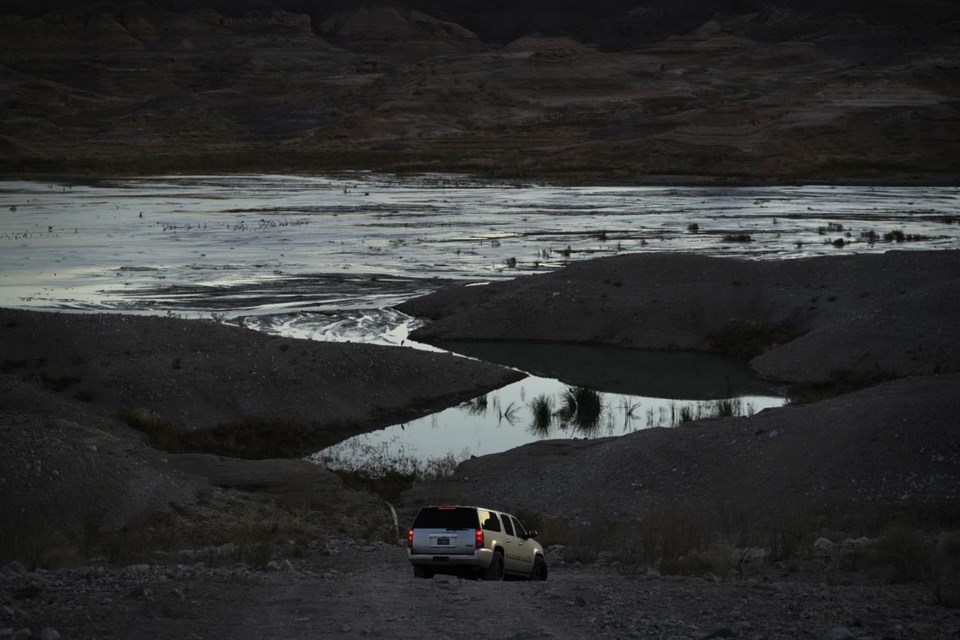DENVER (AP) — Nearly half of the U.S. West has emerged from drought this spring, but the welcome wet conditions haven't entirely replenished the region, scientists said Tuesday.
Hydrologists from the National Oceanic and Atmospheric Administration said deep snowpack across much of the West will bring short-term relief, but the equally deep “bathtub rings” at Lake Powell and Lake Mead reservoirs are a reminder of the long road to bringing supply and demand in balance.
This winter brought bountiful and persistent snow from the Sierra Nevada to the Rocky Mountains, stranding residents in their homes while setting accumulation records and pulling a large swath of the region out of drought. The quantity of precipitation is impressive, but the fact that snow stuck around this late in the season is perhaps more rare, said Joseph Casola, NOAA's western regional climate services director.
"With climate warming, the odds for such a long-lived anomaly of cold over a large area like the West — the odds for that just go down and down," Casola said.
A continued slow melt helps reduce danger of flooding and delays the onset of the worst wildfire danger in the region. Meanwhile, all that rain and snow means California can provide 100% of the water requested by cities and farms for the first time in years, and is flooding farmland with surplus runoff to replenish precious groundwater.
The big question is how much relief this winter's snow will bring to the Colorado River, which has been depleted by climate change, rising demand and overuse.
A May 1 forecast by the Colorado Basin River Forecast Center said up to 11 million acre-feet of water, or 172% of average, could flow into Lake Powell, a massive reservoir that stores Colorado River water for Arizona, Nevada, California, Mexico and dozens of tribes. That amount could be less depending on how much water the U.S. Bureau of Reclamation spreads among upstream reservoirs.
According to the Bureau's 24-month operating plan, Lake Powell could rise to around 3,590 feet by mid-summer, up 60 feet from its current state. That's a level that hasn't been seen since 2020.
The robust winter takes some pressure off the system and gives states a bit more room to reach an agreement on how to implement water cuts, said Jennifer Pitt of the National Audubon Society, who is working to restore rivers throughout the basin.
As Lake Powell and Lake Mead hit record low levels last summer, the U.S. Bureau of Reclamation told states they would need to cut their water use by 15% to 30%. Those cuts are still being negotiated, while federal officials consider holding back more water at the major dams.
“If everybody plays a part in solving the problem and we don’t place the problem entirely on any one user or one sector or one geography, then by spreading the pain, maybe it hurts a little less all the way around,” Pitt said. ___
The Associated Press receives support from the Walton Family Foundation for coverage of water and environmental policy. The AP is solely responsible for all content. For all of AP’s environmental coverage, visit https://apnews.com/hub/climate-and-environment
Brittany Peterson, The Associated Press



